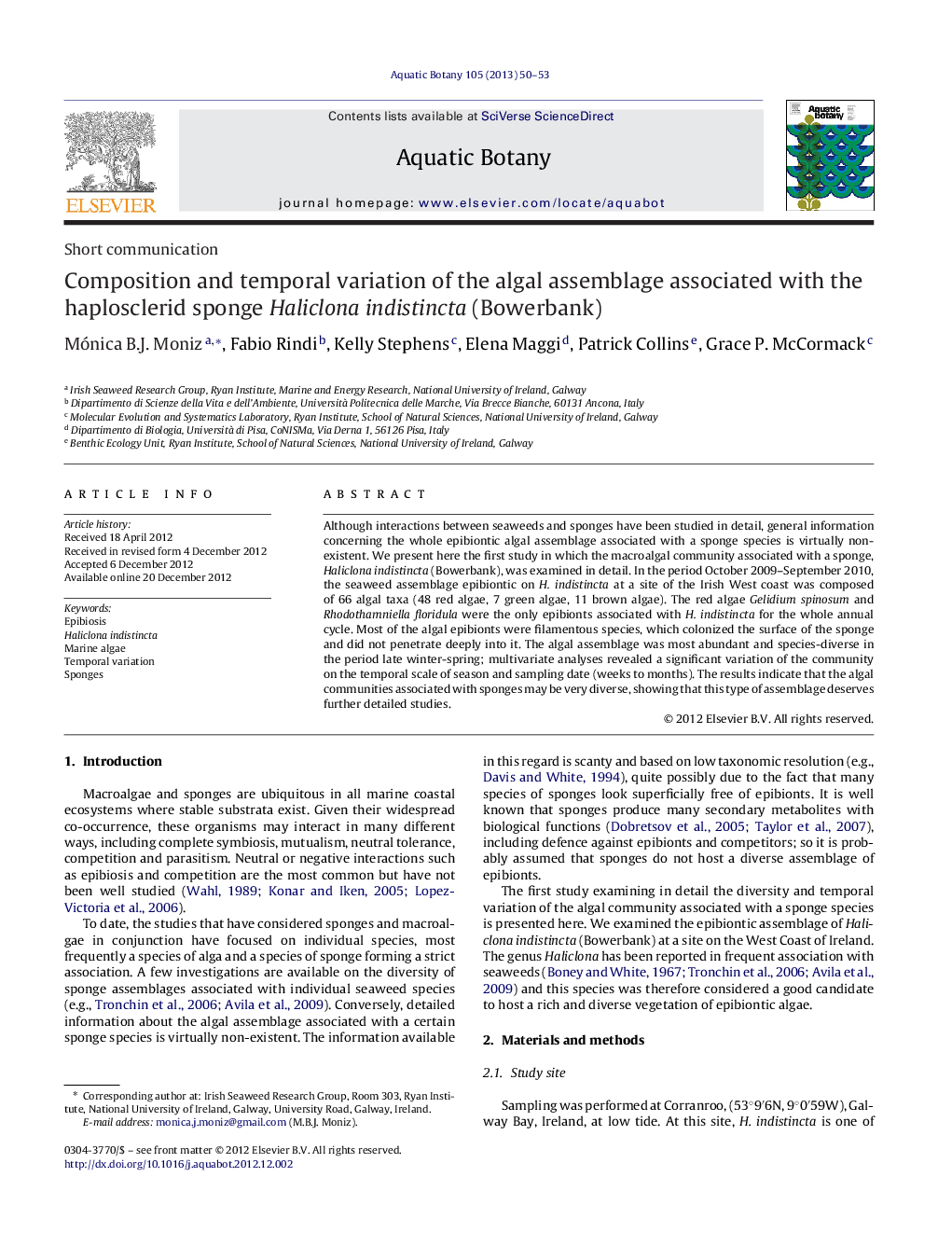| Article ID | Journal | Published Year | Pages | File Type |
|---|---|---|---|---|
| 4527956 | Aquatic Botany | 2013 | 4 Pages |
Although interactions between seaweeds and sponges have been studied in detail, general information concerning the whole epibiontic algal assemblage associated with a sponge species is virtually non-existent. We present here the first study in which the macroalgal community associated with a sponge, Haliclona indistincta (Bowerbank), was examined in detail. In the period October 2009–September 2010, the seaweed assemblage epibiontic on H. indistincta at a site of the Irish West coast was composed of 66 algal taxa (48 red algae, 7 green algae, 11 brown algae). The red algae Gelidium spinosum and Rhodothamniella floridula were the only epibionts associated with H. indistincta for the whole annual cycle. Most of the algal epibionts were filamentous species, which colonized the surface of the sponge and did not penetrate deeply into it. The algal assemblage was most abundant and species-diverse in the period late winter-spring; multivariate analyses revealed a significant variation of the community on the temporal scale of season and sampling date (weeks to months). The results indicate that the algal communities associated with sponges may be very diverse, showing that this type of assemblage deserves further detailed studies.
► The algal epibiontic community of Haliclona indistincta consists of 66 algal taxa. ► Most of the algal epibionts are filamentous species. ► Gelidium spinosum and Rhodothamniella floridula are consistently present. ► The epibiont community varies seasonally and among sampling dates within seasons. ► Algal epibiontic communities of sponges may be more diverse than generally believed.
